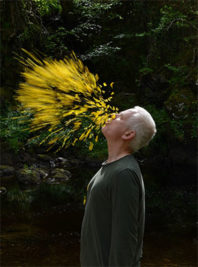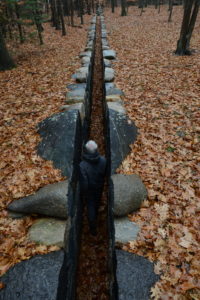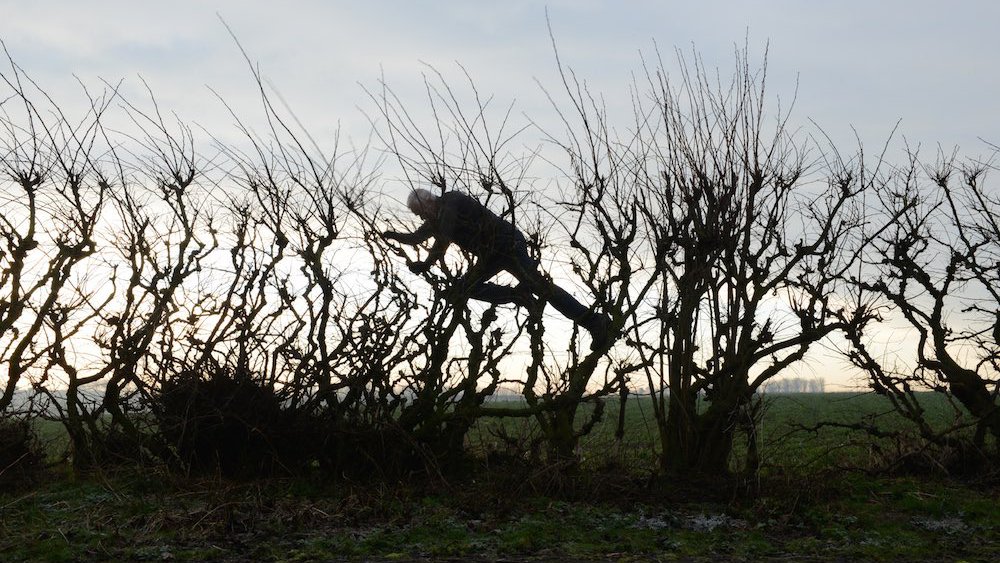
There’s a scene less than ten minutes into Thomas Ridelshemier’s Leaning Into The Wind: Andy Goldsworth that’ll be instantly memorable. The documentary’s titular subject asks one of the men working for him about getting ‘white finger’. I have no idea what white finger is, but just watching him work with people gets me.
However, most of the conversations we see are between Goldsworthy, a sculptor, and Riedelsheimer who is behind the camera. And even during these times Goldsworthy’s openness and introspection comes through. Riedelshemier, then, does his part and lets in these moments when Goldworthy observes nature. Both of them listen to is as much as they visually observe.
Another large chunk of the movie is Riedelsheimer capturing Goldsworthy at work. The latter mostly uses natural materials in his sculptures, doing as I would call organic vandalism. He would pat leaves onto surfaces, stone or wood, that he finds in the countryside.
The film captures Goldsworthy’s Frankenstein-like approach to his artworks. He has a fascination with smaller, thinner branches. He would attach them on top of each other to make something that looks like prison bars or screens. While doing this he would talk about his daughter and assistant, Holly.
These talking head sections are amazing, mostly taking place in the locations where we can find Goldsworthy’s art. It might be a matter of luck that he is effortlessly intelligent without pretension. There’s a spontaneity in these scenes as well, capturing a man whose mind and hands are always busy.
Goldsworthy accentuates what he sees as an object’s death or survival. He would also modify the same fallen tree he’s been working on for the past thirty years. In one iteration he adds twigs to where the roots are. It’s an image that is, for the most part, powerful.
There’s an uncanny valley dynamic to Goldsworthy’s aesthetic. Nature is curves and human intervention is straight lines. And seeing his wild arches confuse the viewer as to whether nature or humanity forced these shapes into being. Or, if it’s human, if it’s one person or a civilixation.
This is also probably not the first time I’m quoting my professor who said what we misunderstand nature. Nature, to some people, is constant in comparison to how humans change their surrounding. Nature constantly changes, yet Goldsworthy still respects it, using some surfaces as his canvas while more hesitant in others.
The doc is never always, serious, however. There’s a whimsy to Goldsworthy’s work that Riedelsheimer does his best to capture. The artist would put a powdery substance on a pine tree then enter the pine tree and shake it. He embodies a spirit that he believes that tree might have.
In a scene Goldsowrthy says that he likes it when it is overcast, which speaks to his British sensibilities. However it seems like Riedelsheimer takes that advice too faithfully. Some of the shots look dark and the director lingers a bit long on here. It takes some of the dynamics away from these artworks.
The doc also begins in places like Brazil and San Francisco. It takes us like a whirlwind from one place to another. But there’s a tonal shift from a frenetic pace. It settles down home to Britain and it feels like a letdown. This is an otherwise fine doc that needs tweaks.
- Release Date: 5/12/2018


